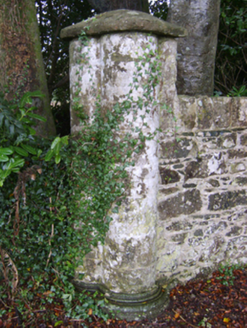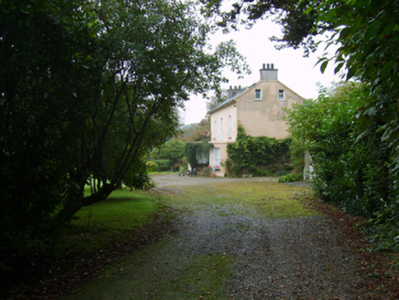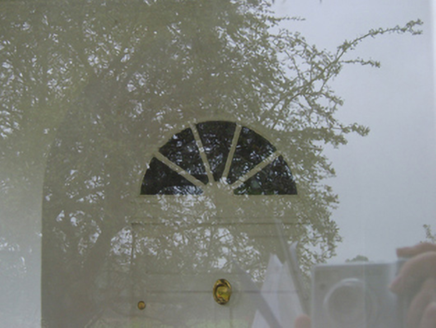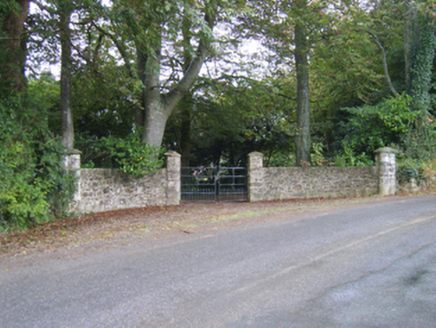Survey Data
Reg No
15703522
Rating
Regional
Categories of Special Interest
Architectural, Artistic, Historical, Social
Original Use
Farm house
In Use As
Farm house
Date
1791 - 1825
Coordinates
282875, 122326
Date Recorded
02/10/2007
Date Updated
--/--/--
Description
Detached three-bay two-storey farmhouse with half-dormer attic, extant 1825, on a cruciform plan centred on single-bay single-storey flat-roofed projecting porch to ground floor; single-bay (single-bay deep) full-height central return (north). Occupied, 1911. "Improved", pre-1922, producing present composition. Sold, 1970. Reroofed, ----. Replacement pitched artificial slate roof on a T-shaped plan centred on hipped artificial slate roof (north) with ridge tiles, lichen-covered concrete or rendered coping to gables with rendered chimney stacks to apexes having concrete capping supporting ribbed yellow terracotta pots, rooflights to front (south) pitch, and uPVC rainwater goods on slightly overhanging rendered slate flagged eaves retaining cast-iron octagonal or ogee hoppers and downpipes. Part creeper- or ivy-covered roughcast battered wall to front (south) elevation with rendered "bas-relief" strips to corners; rendered surface finish (remainder). Round- or segmental-headed central door opening into farmhouse with concealed dressings having concave reveals framing timber panelled having fanlight. Square-headed window openings with cut-granite sills, and concealed dressings framing six-over-six timber sash windows with one-over-one (west) or two-over-two (east) timber sash windows to gables to side elevations. Square-headed window openings to rear (north) elevation with cut-granite sills, and concealed dressings framing six-over-three timber sash windows without horns centred on three-over-six timber sash windows without horns. Set in landscaped grounds with piers to perimeter having domed capping supporting flat iron double gates.
Appraisal
A farmhouse representing an integral component of the domestic built heritage of Newbawn with the architectural value of the composition, one erected on a site leased (1791) from Robert Leigh (1729-1803) of Rosegarland House (see 15704040), confirmed by such attributes as the deliberate alignment maximising on scenic vistas overlooking gently rolling grounds with 'an ancient castle of Norman foundation' as a picturesque eye-catcher in the near distance (Lewis 1837 II, 424); the compact plan form centred on a restrained doorcase showing a simple radial fanlight, albeit one largely concealed behind a later porch; and the diminishing in scale of the openings on each floor producing a graduated visual impression: meanwhile, aspects on the composition clearly illustrate the continued development or "improvement" of the farmhouse in the early twentieth century. Having been well maintained, the elementary form and massing survive intact together with substantial quantities of the original fabric, both to the exterior and to the interior, including some crown or cylinder glazing panels in hornless sash frames, thereby upholding the character or integrity of the composition. Furthermore, adjacent outbuildings (extant 1902) continue to contribute positively to the group and setting values of a self-contained ensemble having historic connections with the Rossiter family including Tobias Patrick Rossiter (d. 1875), 'Gentleman Farmer late of Newbawn County Wexford' (Calendars of Wills and Administrations 1877, 654).







